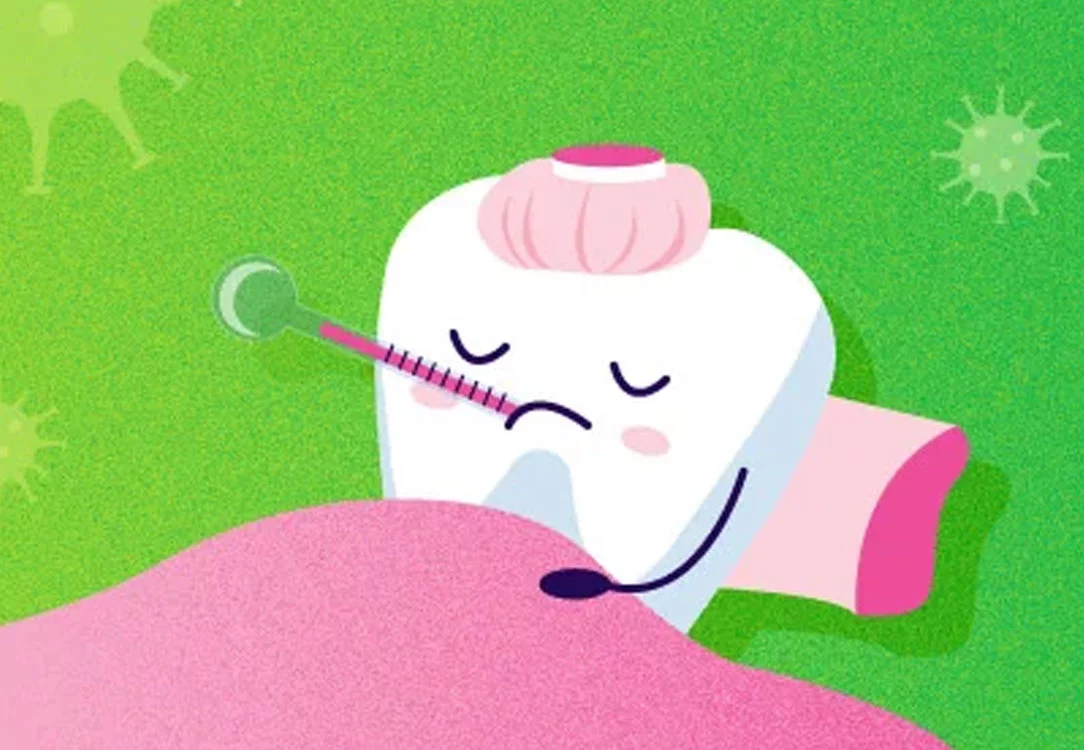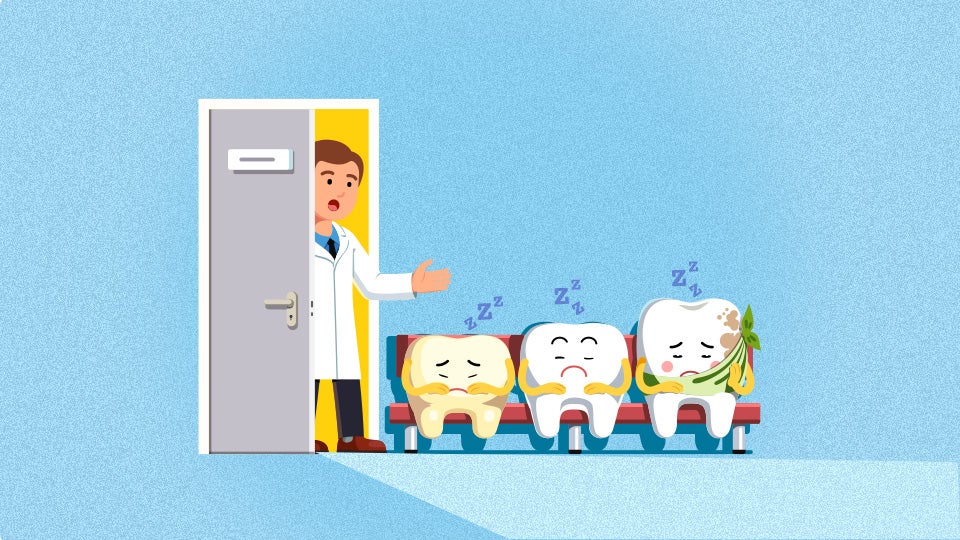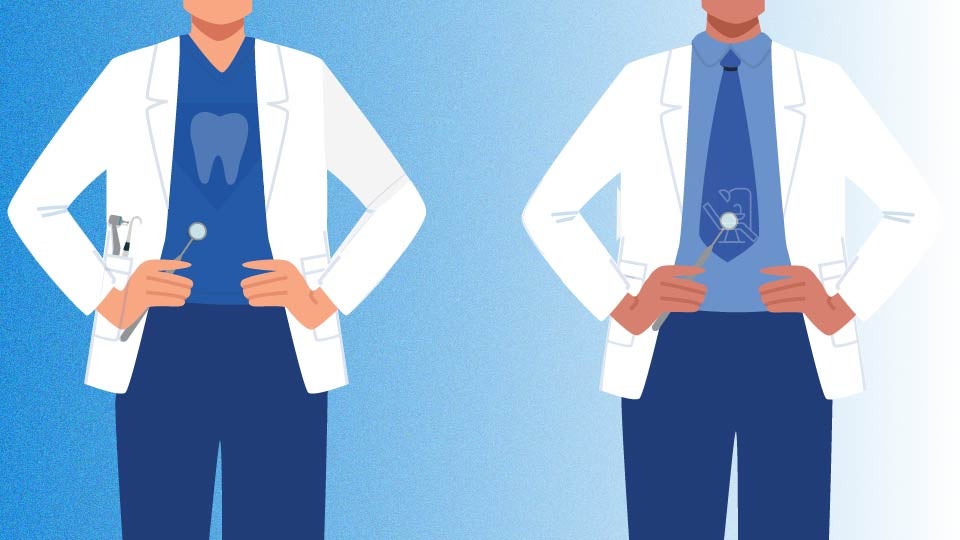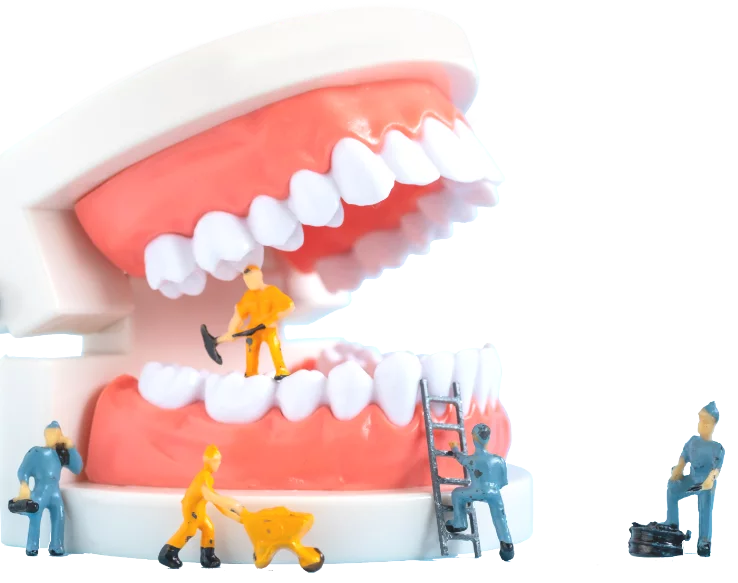Blog Summary Ever notice your teeth or gums hurting after having COVID-19? You’re not imagining it. This article explains why COVID can sometimes cause mouth, gum, or tooth pain & what you can do about it.
Connections Between COVID-19 & Oral Health
The COVID-19 virus — also known as SARS-CoV-2 — has very common and recognizable symptoms. Primary symptoms include a fever, cough, fatigue, and a loss of taste and/or smell. There are also lesser, not-as-common symptoms too. Mouth health issues fall into that category, as some studies have shown a connection between COVID and oral health.
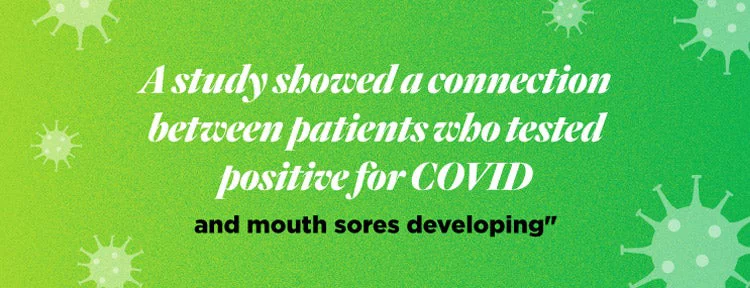
Mouth Sores
A study showed a connection between patients who tested positive for COVID and mouth sores developing. The sores were both in the mouth and outside of the mouth, aphthous-like and superficial necrosis.
Dry Mouth
Another study determined that of 170 people who tested positive for COVID-19, 75 developed dry mouth. Dry mouth is also a contributing factor to developing gum disease. Gum pain is a symptom of gum disease, so COVID-19 indirectly contributes to both.
Teeth Grinding
Grinding teeth is another indirect effect of COVID-19. For a variety of reasons, including transmission potential and avoiding being indoors with others, many people delayed routine medical procedures. Included in that list are regular dental checkups.
Jaw & Tooth Pain
An increase in stress levels associated with the COVID-19 pandemic due to economic uncertainty, increased health risks in other areas, social isolation, and mental health issues such as depression created a rise in those suffering from temporomandibular disorders (TMD). That leads to jaw pain. The pain can spread to the face and neck. TMD causes other symptoms related to jaw and tooth pain. They include lockjaw, clicking or popping sounds emanating from the jaw, headaches, tooth sensitivity, and limited range of motion.
Feeling tooth pain or gum discomfort? Don’t wait it out — early care can make all the difference.
Schedule a Dental Appointment
Discolored Teeth
Some health conditions can cause tooth discoloration. Stained teeth often appear to be yellow. However, there is no direct link between COVID-19 and tooth discoloration.
Swollen gums
Periodontal disease is prevalent in those who suffer from health issues such as diabetes, hypertension, and obesity. It also is more common in seniors. Folks who fall into one of those classifications also tend to be more susceptible to contracting COVID-19.
Bleeding gums
Similar to swollen gums, bleeding gums isn’t a typical COVID symptom. But it is a common symptom that indicates gum disease. Folks who suffer from one of the above-mentioned health issues and test positive for the virus are more apt to have bleeding gums.
Bleeding gums is an indication of gingivitis — the first stage of gum disease. Left untreated, gingivitis will progress into periodontal disease, followed by advanced periodontal disease.
Cavities
Cavities and tooth decay also do not directly result from COVID, but this is another dental health area that was neglected by patients during the pandemic. Many patients neglected office visits and regular checkups throughout the pandemic, which lead to a lower standard of teeth cleaning care.
Neglecting oral care, including professional cleanings, leads to an increase in cavities and decay.
**What to Do if You’re Having Mouth or Tooth Issues After COVID**
If you’ve noticed new mouth sores, gum swelling, dry mouth, or tooth pain after recovering from COVID-19, you’re not alone. Many people experience temporary oral changes as their body heals.
Keep up with daily brushing and flossing, drink plenty of water to fight dry mouth, and avoid grinding your teeth when feeling stressed. But if your symptoms don’t go away or get worse, it’s time to see a dentist.
Schedule a Dental Appointment
Find a Dentist Near Me
Consult your dentist to discuss any questions about COVID-19 and dental issues. Or, check out The Smile Generation Find a Dentist Tool to find a dentist near you for all your oral health needs. You can read patient reviews, peruse staff bios, and schedule an appointment online with a click of your mouse.
Find your trusted, local dentist today!
Covid and Teeth/Gum Pain FAQs
Swollen gums are not a direct symptom caused by COVID-19. However, people with underlying health conditions such as diabetes, hypertension, or obesity — who are also more susceptible to contracting COVID — are more likely to experience swollen gums.
COVID doesn’t cause tooth pain, but stress and teeth grinding during illness can lead to sore teeth and jaw discomfort.
Dry mouth linked to COVID can raise the risk of gum disease, which may cause gum pain.
Not directly—bleeding gums are a sign of gum disease, which may be more common in people with underlying health issues who also have COVID.
Sources
- Yetman, D. (2021, July 9). Are sore gums a symptom of COVID-19? Healthline. https://www.healthline.com/health/sore-gums-covid (Accessed October 22nd, 2025)
- Mozes, A. (2021, September 8). Here's how COVID-19 can affect your mouth. WebMD. https://www.webmd.com/covid/coronavirus#1 (Accessed October 22nd, 2025)
- Reyhaneh Eghbali Zarch, & Hosseinzadeh, P. (2021, January 1). COVID‐19 from the perspective of dentists: A case report and brief review of more than 170 cases. National Library of Medicine. https://pmc.ncbi.nlm.nih.gov/articles/PMC7883121/ (Accessed October 22nd, 2025)
- Brandão, T. B., et al. (2020, August 18). Oral lesions in patients with SARS-CoV-2 infection: Could the oral cavity be a target organ? National Library of Medicine. https://pmc.ncbi.nlm.nih.gov/articles/PMC7434495/ (Accessed October 22nd, 2025)
- Emodi-Perlman, A. (2020, August 23). Temporomandibular disorders and bruxism outbreak as a possible factor of orofacial pain worsening during the COVID-19 pandemic—Concomitant research in two countries. Journal of Clinical Medicine. https://www.mdpi.com/2077-0383/9/10/3250 (Accessed October 22nd, 2025)
- Temporomandibular Disorder (TMD). (n.d.). Johns Hopkins Medicine. https://www.hopkinsmedicine.org/health/conditions-and-diseases/temporomandibular-disorder-tmd (Accessed October 22nd, 2025)
- Chakraborty, T. (2021, March 27). A review of prolonged post-COVID-19 symptoms and their implications on dental management. International Journal of Environmental Research and Public Health. https://www.mdpi.com/1660-4601/18/10/5131/htm (Accessed October 22nd, 2025)
- Conforti, C. (2020, May 15). Doxycycline, a widely used antibiotic in dermatology with a possible anti‐inflammatory action against IL‐6 in COVID‐19 outbreak. Dermatologic Therapy. https://pmc.ncbi.nlm.nih.gov/articles/PMC7235480/ (Accessed October 22nd, 2025)
Smile Generation blog articles are reviewed by a licensed dental professional before publishing. However, we present this information for educational purposes only with the intent to promote readers’ understanding of oral health and oral healthcare treatment options and technology. We do not intend for our blog content to substitute for professional dental care and clinical advice, diagnosis, or treatment planning provided by a licensed dental professional. Smile Generation always recommends seeking the advice of a dentist, physician, or other licensed healthcare professional for a dental or medical condition or treatment.


